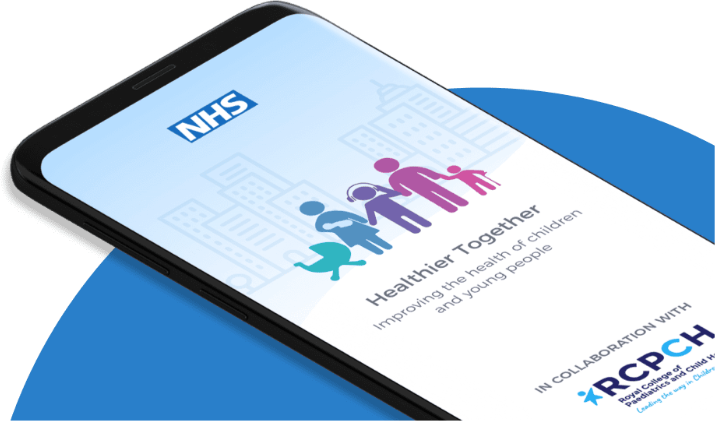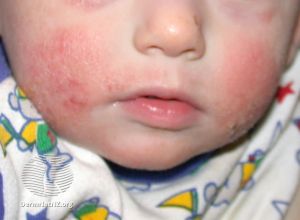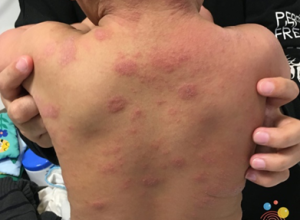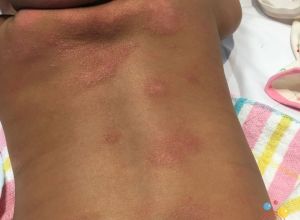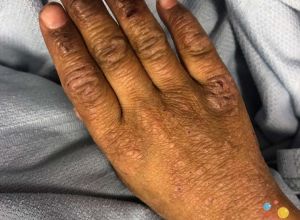Eczema in babies often appears between 3-6 months of age. It can develop anytime after birth or in childhood.
The main features of eczema are:
-
Intense itch
-
Dry skin
-
Rash
-
Redness
-
Inflammation
In infants and babies, eczema affects the face, scalp and body. It does not usually affect the nappy area. As your child grows older the pattern of eczema changes. It affects the skin behind the elbow and the knee. In some children it affects the whole body.
In children of Asian, black Caribbean or black African ethnic groups, eczema can affect different places including the front surface of the knee or wrist. It can also look different with the skin being bumpy and slightly darker instead of red.
It is important to be aware of and look for signs of worsening eczema.
Recognise a flare: A ‘flare’ is a worsening of the eczema. Skin may become red, sore, (more) itchy, crack or bleed.
Recognise infected eczema: If skin suddenly worsens, weeps fluid or crusts it could be infected and your child may need antibiotics. Seek urgent advice if your child is unwell or the infection is widespread.
Blisters or cold sores need urgent antiviral treatment. See your GP or seek medical advice the same day.
Food allergy: This is rare. Consider food allergy if eczema started as a baby. It is not usually the cause of eczema in older children.





